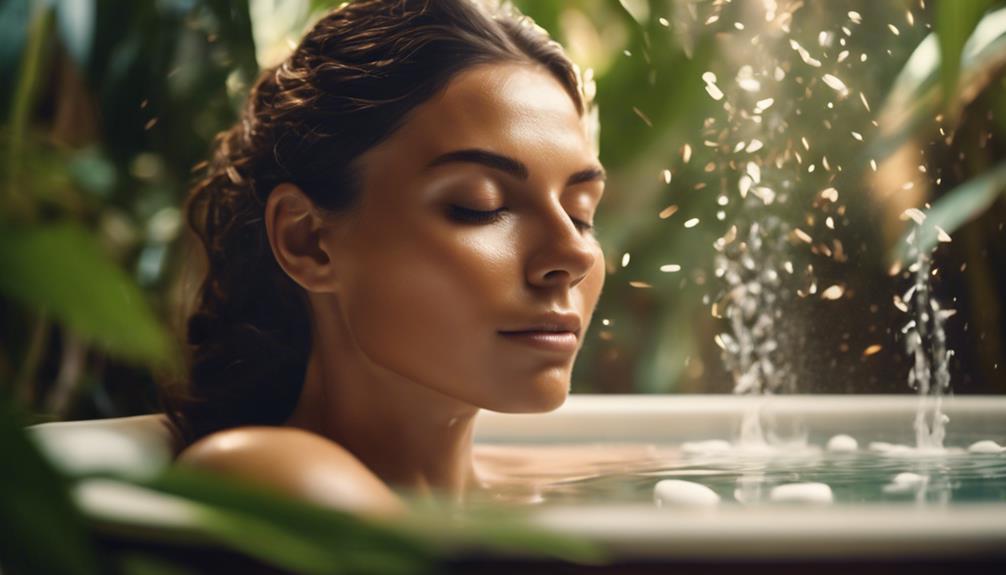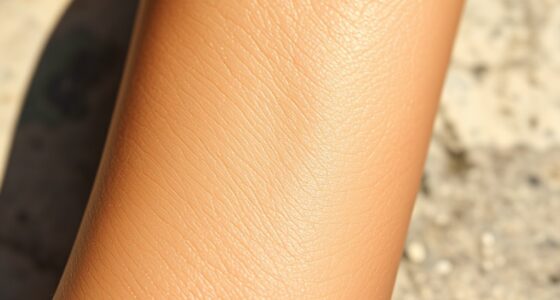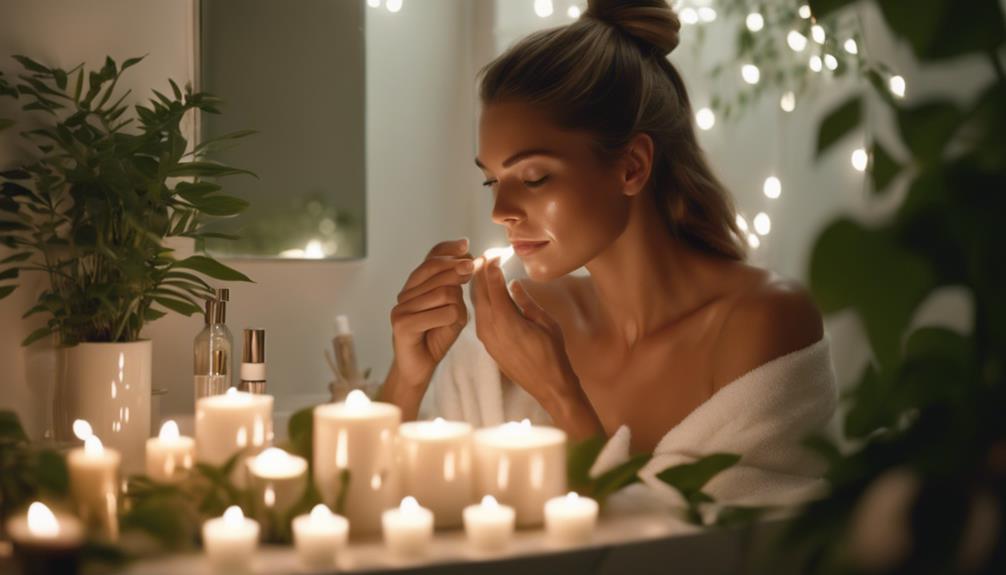If you're using tanning beds too much, watch out for some telltale signs! If your skin feels extra sensitive, red, or itchy, that's your body waving a little flag! Also, dryness and peeling aren't exactly signs of a beach day; they mean it's time to take a break. Keep an eye on any moles or spots—changes in color or size are worth mentioning to a doctor. And don't forget your eyes; gritty or red eyes after tanning could mean trouble. So, be smart about your glow, and stick around to find out how to keep your skin safe!
Key Takeaways
- Look for unusual sensitivity, redness, or itchiness as early warning signs of skin damage from tanning bed overuse.
- Monitor for dryness or peeling skin, indicating potential overexposure to UV rays.
- Be aware of new freckles or changes in existing moles, which could signal skin cancer risk.
- Protect your eyes with goggles to prevent irritation and long-term damage from UV exposure during tanning sessions.
Signs of Skin Damage
When you notice unusual sensitivity, redness, or itchiness on your skin, it's a clear sign that you may be experiencing damage from tanning bed overuse. Your skin's like a delicate flower, and too much sun can make it wilt!
If you see dryness or peeling, that's another red flag waving at you. Itchy rashes can pop up after those tanning sessions, signaling that you've crossed the line into excessive UV exposure.
Don't ignore these signs; they might seem minor now, but they could lead to serious issues later. Persistent redness and itchiness aren't just annoying; they mean your skin's in distress. So, listen to your skin—it's trying to tell you something important before things get really serious!
Effects on Skin Aging
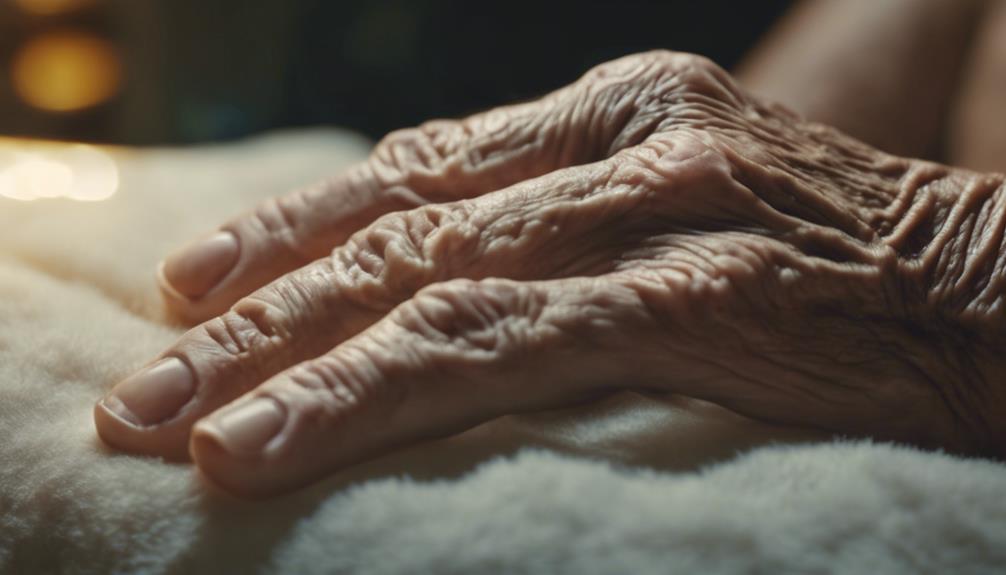
Ignoring the signs of skin damage can lead to accelerated aging, as frequent tanning beds break down collagen and elastin, resulting in premature wrinkles and sagging. Prolonged exposure to harmful UV rays may also increase the risk of dark spots and uneven skin tone, further compromising your skin’s health and appearance. To protect your skin, it’s crucial to educate yourself on chest tanning mistakes to avoid, such as neglecting sunscreen or failing to moisturize regularly. Taking proactive steps can help preserve your skin’s youthful look and minimize long-term damage.
You might think that a bronzed glow makes you look younger, but the truth is, it can actually age you faster! Each time you expose your skin to those harsh UV rays, you're inviting fine lines, uneven skin tone, and a leathery texture to the party. Yikes!
Your skin deserves better than that. Instead of chasing that golden hue, consider embracing your natural beauty or trying safer alternatives like self-tanners.
Monitoring Moles and Spots
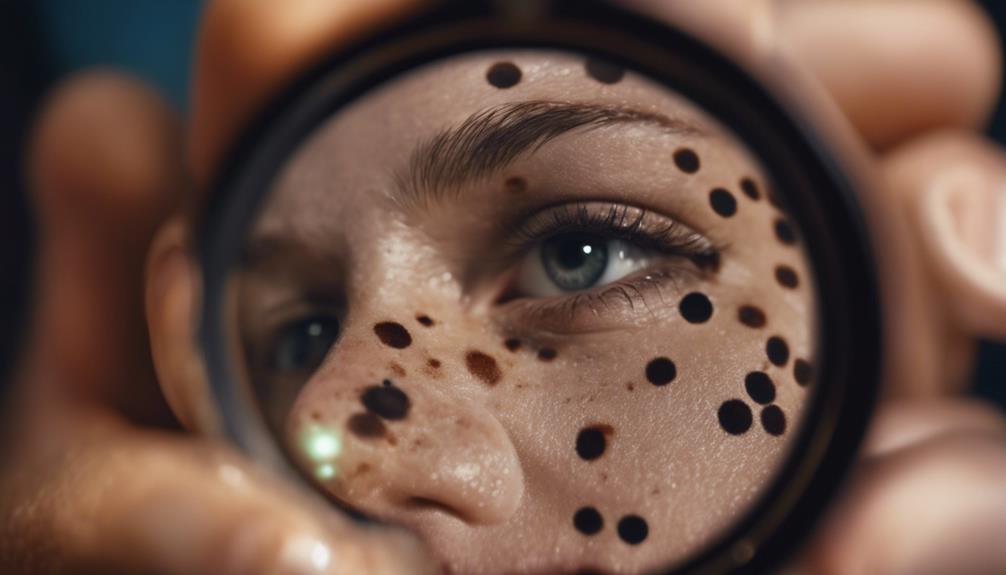
Regularly checking your moles and skin spots is essential for spotting potential signs of skin cancer early on. Think of it as a little skin detective work!
Look for changes in color, size, or shape. If you notice a mole that's growing faster than your favorite plant, it's time to get it checked out. New freckles popping up after those tanning sessions? Keep an eye on them. You want your skin to be happy, not stressed!
Remember, moles with jagged edges or weird colors are like warning lights on your car—don't ignore them! By staying vigilant, you can catch issues before they escalate.
After all, your skin deserves all the TLC it can get!
Eye Irritation Risks

If you experience gritty or red eyes after a tanning session, it could signal potential UV overexposure that warrants immediate attention. You might think, “It's just a little irritation,” but ignoring those warning signs can lead to serious eye problems.
Protecting your peepers is super important! Always wear protective goggles while tanning, or you risk facing issues like photokeratitis, which feels like having sand in your eyes. Ouch!
Plus, over time, too much UV exposure can increase your chances of developing cataracts and even macular degeneration. So, the next time you hit that tanning bed, remember to shield your eyes, because you want your vision to last as long as your glow!
Keep those eyes happy and healthy!
Health Risks and Prevention
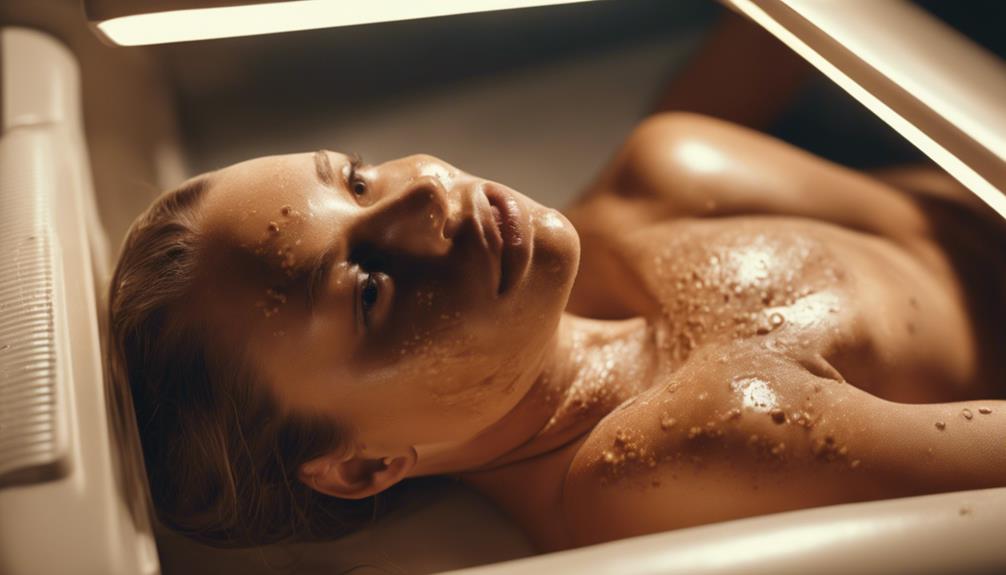
Excessive tanning bed use greatly increases your risk of developing skin cancers, including melanoma, especially if you start before age 35. Yikes! You definitely don't want that.
Here are some quick tips to help you stay safe:
- Use tanning goggles to protect your eyes from harmful rays.
- Limit tanning sessions to reduce overall UV exposure.
Frequently Asked Questions
How Often Should I Use Tanning Beds Safely?
You should limit tanning bed use to once every two weeks for safe exposure. Always monitor your skin's reaction, and consider alternatives like self-tanners to achieve a bronzed look without the risks of UV damage.
What Are the Benefits of Natural Sun Exposure Vs. Tanning Beds?
Natural sun exposure provides vitamin D, boosts mood, and promotes healthier skin without the risks associated with tanning beds. You'll enjoy a more balanced and safer approach to achieving that sun-kissed glow while protecting your skin.
Can Tanning Beds Cause Hair Damage or Changes?
Using tanning beds is like playing with fire; it can scorch your hair. UV exposure might dry it out, leading to brittleness and color changes. Protect your locks by limiting tanning sessions and using proper hair care.
Are There Specific Skin Types More at Risk From Tanning?
Yes, certain skin types are more at risk from tanning. Fair-skinned individuals, those with freckles, or a history of sunburns face higher chances of damage. Always consider your skin type before exposing yourself to UV rays.
What Are the Best Alternatives to Achieve a Tan Safely?
Getting a tan naturally is like basking in the sun's warm embrace. Try self-tanners, bronzing lotions, or tinted moisturizers for a sun-kissed glow without UV risks. You'll achieve a beautiful tan safely and effectively!
Conclusion
So, before you dive headfirst into that tanning bed like it's a giant pool of liquid sunshine, remember to listen to your skin!
If it starts throwing tantrums with redness or itchiness, it's waving a big red flag. Protect yourself from those sneaky skin villains and keep an eye on any weird moles.
Opt for safer alternatives, like self-tanners or bronzers, and keep your skin happy, healthy, and glowing without the risks!
Your skin will thank you!

